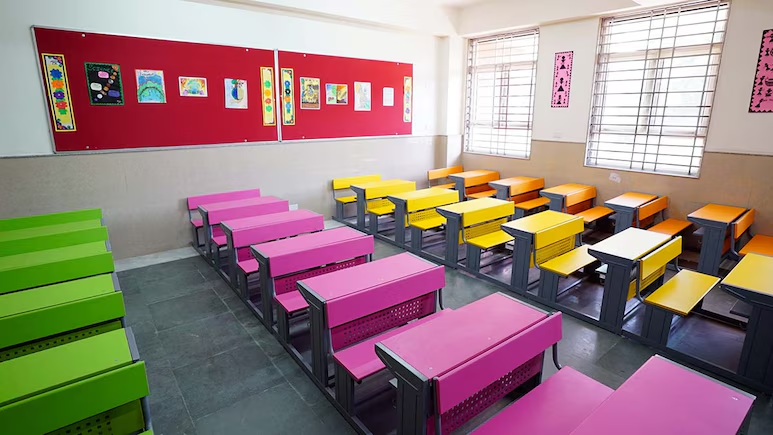
With the Union Cabinet approval for a new National Education Policy on Tuesday, the functioning of schools and colleges will never be the same again.
Owing to the need for digital education during the Covid-19 pandemic, the New Education Policy, or NEP 2020 has set out measures to promote multilingualism and produce e-content in eight regional languages.
In the latest move, Higher Education Secretary Amit Khare said, “In online learning, most of the time our focus is on English or Hindi. But we will develop e-content in eight regional languages- Tamil, Telegu, Kannada, Malayalam, Gujarati, Marathi, Bengali, Oriya.”
In addition to this, the NEPT recommends setting up an Indian Institute of Translation and Interpretation (IITI), National Institute (or Institutes) for Pali, Persian and Prakrit. The policies also aim to strengthen Sanskrit and ensure the use of mother tongue, local language and regional language as a medium of instruction in HEI programmes.
With major reforms in higher education and structural reforms in the school system from 10+2 model, NEP introduces 5+3+3+4 model with a target of 50 per cent Gross Enrolment Ratio (GER) by 2035.
Union Minister Prakash Javadekar said a 21st century National Education Policy (NEP) was the need of the hour as no changed have been introduced in the last 34 years.
In order to encourage technology, the National Educational Technology Forum, or NETF, as an autonomous body, will be created. This aims to provide a platform for the free exchange of ideas on the use of technology to enhance learning, assessment, planning, administration.
While introducing the changes, the minister announced major changes in the pedagogical structure of the curriculum as well. Now, the students will be having increased flexibility and choice of subjects as they will be able to take up any courses they want. The schools will not have any rigid formation of streams of arts, commerce, science. Additionally, there will be no separation between curricular or extra-curricular activities and vocational or academic streams.
Highlights of the structural change in the school curriculum
·Introducing variations to the education model, the school education system will now be organised in the 5+3+3+4 format, scrapping the existing 10+2.
·The new system will cover four stages- Foundational Stage (three years of pre-school followed by classes 1-2), Preparatory Stage (classes 3-5), Middle Stage (classes 6-8) and Secondary Stage (classes 9-12).
·Children younger than five years of age will be eligible for enrolment in a “preparatory class”. A teacher qualified in early childhood education will be designated to teach young children.
·Reduction of the weight of school bags and textbooks will be ensured by bringing in changes in curriculum load.
·Foreign languages, such as Korean, Japanese, Thai, French, German, Spanish, Portuguese, and Russian, will also be offered at the secondary level.
·Equal emphasis will be given on all the subjects, such as- science, social sciences, mathematics, art, languages, sports- with the integration of vocational and academic streams in schools.
·Board exams will be redesigned and made easier by testing core capacities and competencies.
